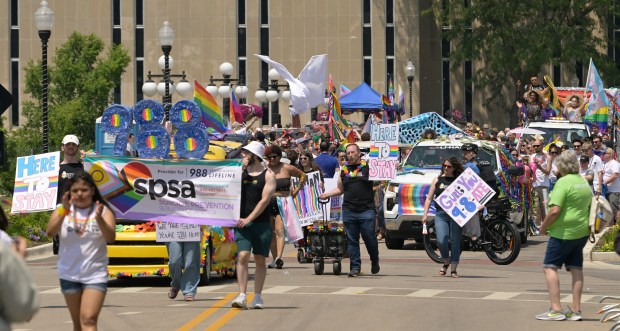Naperville is now the third-largest city in Illinois, according to new estimates from the U.S. census.
The city added 1,958 residents between mid-2023 and mid-2024, bringing its total population to 153,124, latest data shows. Seeing year after year consecutive growth since 2021, Naperville has surpassed Joliet to become the third most-populated municipality across the state.
As of July last year, Chicago posted the largest population of any municipality statewide at 2,721,308, followed by Aurora at 180,710. Trailing behind Naperville was Joliet with a population of 151,837 and Rockford with 147,486.
Naperville Mayor Scott Wehrli said he wasn’t surprised by the news.
“Naperville has always been a growing community,” he said. “City leaders past and present have always made these long-term plans to make our city a great place to live, work and retire. … It’s all part of the plan that was put into place going back to the late ’60s and early ’70s. So it’s no surprise to me that success continues to resonate today.”
In 1960, Naperville had a population of just under 13,000 people, according to Naper Settlement, the city’s outdoor history museum. In the decades that followed, however, the city began to rapidly grow. The city grew to 50 square miles in 1993 and hit a population of 128,358 by 2000, per the settlement.
Fast forward to today, the city had been “tracking that there was (still) a significant amount of growth happening,” Wehrli said.
Last year, the city issued 6,568 residential and commercial building permits — a more than 50% increase increase from 2023, he said.
Naperville’s population has grown by 11,271 people since 2010, according to census data. Since 2020, Naperville has seen the second-largest population growth among places in the Chicago area, according to a recent analysis. Plainfield led the region with nearly 4,000 arrivals since 2020.
Asked if he anticipates Naperville’s growth to continue in future years, Wehrli said, “We always hope.”
The challenge going forward, he said, will be ensuring the city continues to employ “careful planning, compromise and negotiation to get the best growth, investment and development opportunities added to the city” that stay in character with the community.
And Naperville has room to grow, Wehrli said. “I think redevelopment has already existed for several decades now.” One example currently underway is the mixed-use development planned for the former DeVry University Campus at 1200 E. Diehl Road, he said.
“With that said, I think there are also some opportunities for other redevelopment … I mean, the market is very strong. The days on the market for single-family (homes) as well as apartments and other types of housing options are very, very short,” he said. “And as that continues, I think there will be more people that look at opportunities to redevelop certain areas of the community. And we will be ready to see what they’re willing to put on the table for us.”
Wehrli also pointed to the best-of lists that Naperville frequently lands on.
“It really does put a spotlight on all of the things that make (Naperville) a desirable city,” he said.
For two years in a row, Naperville has ranked No. 1 on Niche’s list of Best Cities to Live in America. Last month, the city also found itself on Livability.com’s best places to live in the U.S.
Most recently, Naperville ranked No. 4 on GOBankingRates’ list of the 50 safest, most affordable cities for a family of four across the country. GOBankingRates is a personal finance news and features website.
To compile its list, which was released last week, GOBankingRates analyzed cities with populations of at least 100,000 on several factors, including household median income, property and violent crime rates per 1,000 residents, average value of a single-family home and annual cost of living.
GOBankingRates pulled data from the FBI, Federal Reserve, Bureau of Labor Statistics and Zillow.
Naperville snagged the fourth spot. Fishers, Indiana, ranked first, followed by Sugar Land and League City, both in Texas.



